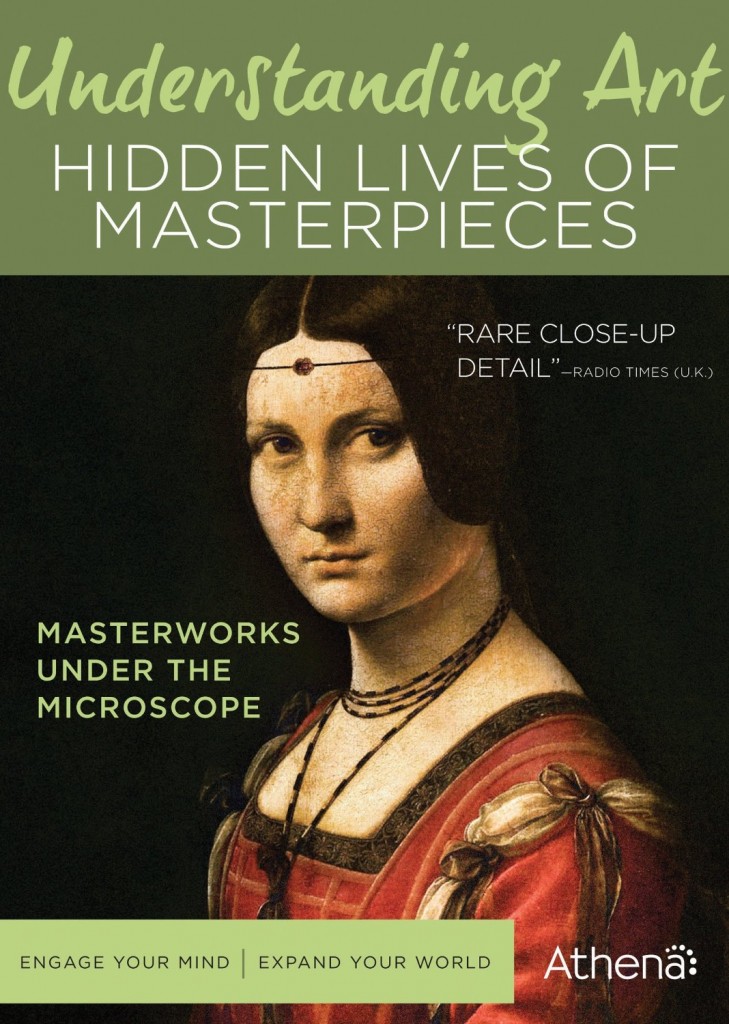Making a great video about visual art is a challenge, so I’m glad producers keep doing it. In recent days, I’ve had an opportunity to sample a new DVD series called Understanding Art: Hidden Lives of Masterpieces that takes a new tack.
 Made by Juliette Garcia and Stan Neumann, it has five episodes, each focusing on one artist with many works in the collection of the Louvre: Raphael, Rembrandt, Poussin, Watteau and Leonardo. Instead of telling the life of the artist, they essentially film the Louvre’s study days, then take the “best parts” and boil them down into a 58-minute or so documentary.
Made by Juliette Garcia and Stan Neumann, it has five episodes, each focusing on one artist with many works in the collection of the Louvre: Raphael, Rembrandt, Poussin, Watteau and Leonardo. Instead of telling the life of the artist, they essentially film the Louvre’s study days, then take the “best parts” and boil them down into a 58-minute or so documentary.
So the video part shows a bunch of art curators, academics, conservators, restorers and scientists standing and sitting around talking about paintings, which have been removed from their frames and their glass protectors and are sitting on easels — the better for close up examination. The experts often sit in an audience while one of them expounds his (mostly — there are women but far fewer of them talk) theories on how or why the painting was made, what changes the artist made, or others, made to his work, or what the artist was trying to accomplish. People talk in French, English and Italian, so there’s a voice-over, when necessary, explaining what is being said. That voice — which is fast-paced, thank goodness — also gives the necessary background about the artist when it is relevant. (Here’s a look at a trailer for the series and here’s a clip from the Raphael episode.)
The camera also goes in close, sometimes, to show to viewers what the experts are discussing, and sometimes the viewer sees simple, animated schematic diagrams that explain a point — e.g., how a painting is transferred from wood to canvas.
I watched only the Raphael and Leonardo episodes, so these comments may not accurately describe the other three segments. I learned some things, as clearly these are more educational than entertainment (though they do that at some level too). Some topics/points are simply debated, as the experts do not agree — such as whether that small Annunciation in the Louvre’s collection really is a Leonardo, whether he did some, but not all of it, and so forth. With Raphael, the experts discuss the compositions of the two Madonna of the Rocks works, how Raphael painted a portrait of a woman he never saw, who put that angel in The Holy Family from 1518 and what is going on in that Self-portrait with a Friend (1518-20). When they don’t know, or agree, more study is called for.
Oddly, this is neither preachy, nor boring. The episodes drag occasionally, and I could not imagine watching two days of this — experts like to pontificate and condescend, and while there’s a little of that here, for flavor, there’s not much; it has been edited out.
There is one drawback: these study days date to 2006, before the great Leonardo exhibition in London, and it’s a tad out of date on the restoration front. Perhaps with others, too. (On the other hand, some art historians you may know look a lot younger!)
But, bottom line: if you are really interested in these artists, you might buy this series ($49.99 for the five-episode, two-disc series) from Athena. (Search online, though, and you can find it for less — try Target.) If you have just a casual interest in art, these are not for you.
